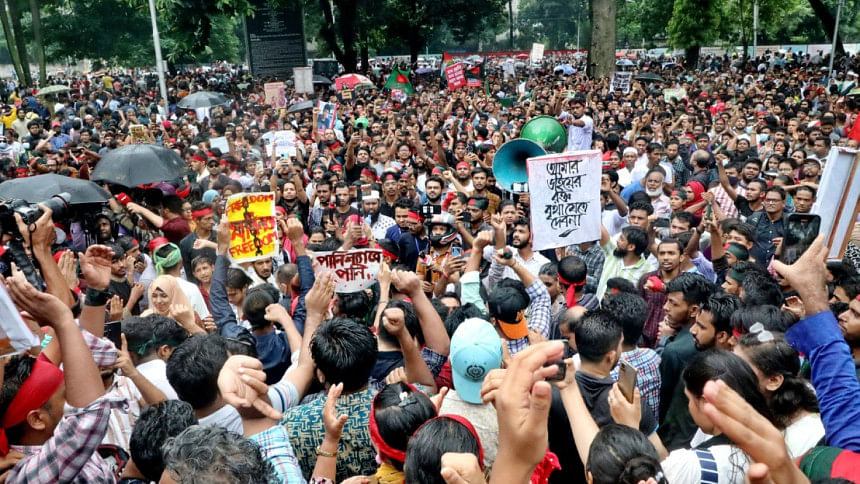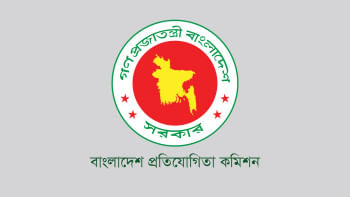Looking at the July uprising through Actor-Network Theory

"Action is not done under the full control of consciousness; action should rather be felt as a node, a knot, and a conglomerate of many surprising sets of agencies that have to be slowly disentangled."
— Bruno Latour (2005).
When protests swept across Bangladesh in July-August 2024, culminating in the collapse of the Sheikh Hasina regime, the dominant narratives pointed to rising food prices, suppression of electoral rights, and widespread public dissatisfaction. But to understand the complexity and temporality of the July uprising, we need a conceptual apparatus that doesn't reduce cause and effect to binaries of state vs people or elite vs masses. The Actor-Network Theory (ANT), developed by thinkers like Bruno Latour, Michel Callon, and John Law, offers just such a lens.
ANT shifts the analytical gaze away from centralised actors and towards heterogeneous assemblages of human and non-human agents, each contributing agency through a web of interactions. It is not people alone who make revolutions; rather, power is distributed, negotiated, and performed through constellations of bodies, technologies, infrastructures, discourses, and materialities. By tracing how these actors align, disalign, and realign over time, ANT allows us to reassemble the political landscape not as a stable structure, but as a networked effect, always at risk of coming undone.
A revolution of actants
What emerged in July-August 2024 was a perfect storm—not in the metaphorical sense of a rare confluence of disasters but, in ANT's terms, a dense network of actors aligning across domains of affect, infrastructure, economy, and narrative.
Latour's insistence that action should be felt not as a conscious decision but as a "node, a knot, and a conglomerate of many surprising sets of agencies" is particularly useful here. The July uprising was not just the sum of autonomous decisions; it was the effect of entangled agencies acting in concert and contradiction. Streets became stages where crowds moved with semi-intentional choreography, guided by calls from loudspeakers, updates from X feeds, or the sudden dispersal caused by a water cannon. The logic of revolt emerged not from centralised strategy but from the recursive entanglement of all these actors, human and non-human.
Seen through ANT, the July uprising was a networked event, a convergence of actors both familiar and unexpected. University students were joined by school-goers, informal sector labourers, disenfranchised voters, and retired bureaucrats, among many others. But no less significant were skyrocketing rice prices, delayed electricity bills, tear gas canisters, Facebook livestreams, and leaked videos of police brutality. These were not mere backdrops to human agency but active participants in shaping public perception, coordination, and rage. ANT's refusal to grant ontological privilege to humans alone foregrounds how non-humans like hashtags (#DownWithHasina), barricades, and even monsoon downpours shaped the rhythms of revolt. A protester's banner reading "Give me rice or give me justice" was not only a slogan but a node in a wider network of affective mobilisation.
Even the topography of the protests took on meaning through ANT's framework. The occupation of intersections and symbolic siege of ministry buildings all functioned as non-verbal scripts performed by crowds and urban architecture alike. Roads became political actors—so did curfews and roadblocks. These spatial and material conditions produced feedback loops in which visibility, vulnerability, and solidarity were reconfigured in real time.
Translating discontent
Central to ANT is the notion of "translation"—how actors enrol others into a network, often redefining roles in the process. The uprising did not spring from ideological coherence but from the strategic translation of disparate grievances. Some political parties, left-leaning student alliances, religious groups, and civil society organisations constructed temporary alignments around slogans that floated free of fixed referents.
"Down with Hasina" became a capacious signifier, suturing together demands for electoral reform, food security, dignity in labour, and democratic governance. The interim government that emerged post-uprising was itself not a fixed solution, but a provisional actor within this new network, one that could stabilise or unravel depending on how actants continued to assemble.
The translation was not without friction. Competing visions of post-uprising Bangladesh jostled for primacy. Some sought immediate elections; others wanted a truth and reconciliation commission. Still others demanded reparative justice for the dead and disappeared. ANT reminds us that these differences do not weaken the network but demonstrate its dynamism and ongoing negotiation.
Fragility, mediation, and reversibility
ANT emphasises that networks are never permanent. Their stability relies on continuous performance and negotiation. For long, the Hasina regime relied on a network of security forces, foreign investment, bureaucratic compliance, and digital surveillance. But when segments of that network began to disaggregate—as seen in police defections, muted international responses, and media platforms turning critical—the regime's performative power faltered.
Meanwhile, protest networks expanded transnationally. Diaspora activism, international human rights statements, IMF warnings, and viral TikToks all introduced new nodes that exerted pressure on local dynamics. Each new actant either reinforced or challenged the existing topology of power. Crucially, ANT helps us see that power is not possessed but enacted through these fluctuating relations.
Equally important is ANT's insight that the collapse of a regime is not the end of a network but a transformation. The Hasina regime's fall did not erase its network; it reconfigured it. Some institutions adapted; others resisted. The military's neutrality, for instance, became a pivotal actant.
Technopolitics and infrastructural breakdown
Technology played a vital role as a mediating actor. Smartphones, VPNs, mobile banking apps, and content moderation algorithms shaped how information flowed and resistance formed. The failure of certain infrastructural systems—supply chains, energy grids, and digital transactions—also acted as silent insurrections against the state's claim to order and efficiency.
ANT understands these not as background conditions but as relational disruptions that recalibrate agency. A power outage in Chattogram was as much a political actor in the uprising as a protest march in Dhaka. In this sense, the uprising was as infrastructural as it was ideological.
Moreover, the sheer visibility of infrastructural breakdown became a form of counter-legitimacy. When people waited in line for hours for cooking oil or faced sudden disruptions in mobile banking, these daily inconveniences became discursive weapons, channelled into rants on social media, street slogans, and graffiti. ANT allows us to see how this cascade of micro-failures activated macro-political consequences.
Reassembling networks in motion
What emerges from this ANT-inflected reading is not a catalogue of causes but a dynamic cartography of entanglements. Rather than asking why the revolt happened or who made it happen, we begin to see how agency was dispersed, re-routed, and recursively enacted through volatile connections. ANT enables us to perceive these shifting assemblages as the very medium of political possibility. The uprising thus resists closure—not because it was unfinished in terms of outcomes, but because its very structure was one of continuous rearticulation. Before we speak of conclusions, we must acknowledge this provisionality.
ANT does not offer moral judgement or teleology. It offers a method for tracing how associations form, dissolve, and recombine. The July uprising in Bangladesh was not the result of a single cause or charismatic leadership. It was a dense choreography of actors assembling into momentary consensus, driven as much by affect and infrastructure as by slogans or manifestos.
In retrospect, to ask who led the uprising is the wrong question. The better question, from ANT's perspective, is: what network of humans and non-humans made the uprising visible, thinkable, and actionable? The answer lies not in the linear history of regime change but in the topology of connection—a cartography of revolt that remains provisional, reversible, and still unfolding.
ANT invites us to remain attentive to the unfinished nature of political transformation. The networks that brought down the Hasina regime are not inherently emancipatory; they are heterogeneous, unstable, and constantly in flux. What they do offer, however, is a method for tracking the emergence of new possibilities and the contestations that accompany them.
Dr Faridul Alam is a retired academic and writes from New York City, US.
Views expressed in this article are the author's own.
Follow The Daily Star Opinion on Facebook for the latest opinions, commentaries and analyses by experts and professionals. To contribute your article or letter to The Daily Star Opinion, see our guidelines for submission.

 For all latest news, follow The Daily Star's Google News channel.
For all latest news, follow The Daily Star's Google News channel. 






Comments